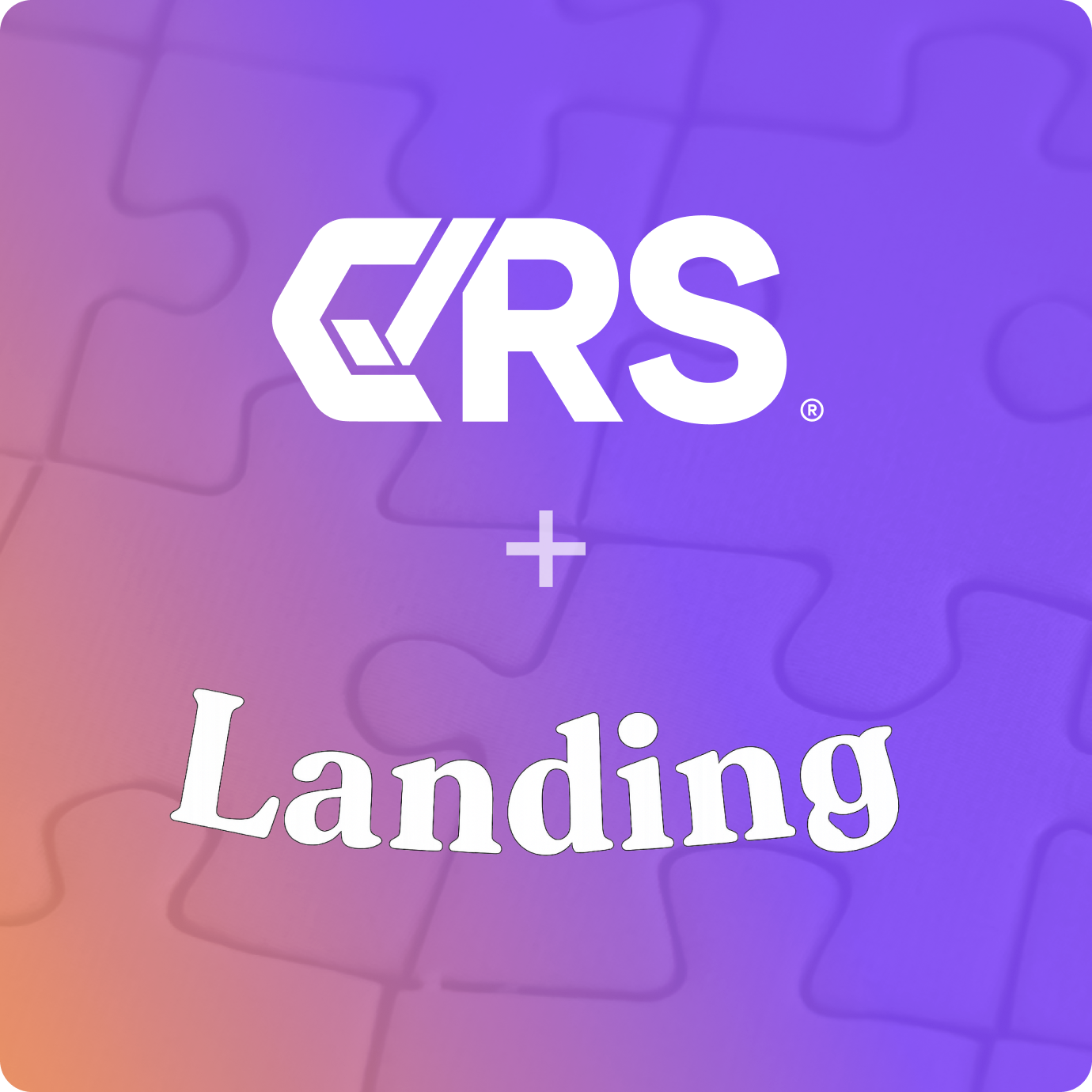Integrating credit bureau APIs from Equifax, Experian, and TransUnion traditionally requires managing multiple vendor relationships, navigating fragmented documentation, and maintaining separate compliance frameworks. CRS’s unified platform transforms this complexity into a single, streamlined integration that delivers comprehensive credit data, automated compliance checks, and fraud screening through one API connection. This guide walks product, engineering, and risk leaders through the complete integration process—from requirements assessment through production deployment—while highlighting how CRS accelerates time-to-market and reduces operational overhead for U.S.-based financial services organizations.
Assess Your Integration Requirements
Before writing a single line of code, clarify what your organization needs from credit bureau data. Start by documenting your core integration goals: are you building seamless loan origination workflows, automating underwriting decisions, or implementing real-time fraud checks? Each use case demands different data types and compliance considerations.
Identify whether you need tri-merge credit reports—consolidated reports combining data from Equifax, Experian, and TransUnion into a single, comprehensive view—or if single-bureau pulls suffice for your risk models. Consumer lending, commercial credit programs, and credit-building products each have distinct data requirements that shape your integration scope.
Consider your operational patterns as well. Will you process credit checks individually as applications arrive, or do you need batch processing capabilities for portfolio reviews and marketing campaigns? Understanding these workflow specifics prevents costly rework and ensures alignment between product, engineering, and compliance teams.
Create a requirements matrix that maps business objectives to specific data types, bureau sources, compliance obligations, and end-user workflows. This structured discovery phase establishes clear success criteria and helps you communicate technical needs across stakeholders before development begins.
Explore CRS’s Unified API Documentation
CRS provides comprehensive API documentation designed to accelerate your integration timeline. The platform’s documentation covers endpoint structures, authentication protocols, and code examples across multiple programming languages including Ruby, Python, and JavaScript. Review these resources carefully to understand how CRS structures credit data requests and responses.
Pay particular attention to sections detailing multi-bureau data requests, which allow you to retrieve information from all three major credit bureaus through unified endpoints. CRS’s documentation also explains how to access fraud detection tools, OFAC compliance screening, and identity verification services—capabilities that extend beyond basic credit reporting to support complete underwriting workflows.
The platform’s CRM and marketing integration guides demonstrate how to connect credit data directly into systems like Salesforce or Zoho, eliminating manual data transfers and reducing operational friction. These integrations enable sales and risk teams to access credit insights within their existing workflows rather than switching between multiple platforms.
Build a documentation review checklist that ensures your team understands critical areas before active development: authentication methods, request and response formats, error handling patterns, rate limits, and compliance features. This upfront investment in understanding CRS’s architecture prevents common integration pitfalls and accelerates your path to production.
Select Compatible Technology and Development Tools
Choose development languages and frameworks that align with CRS’s supported technologies to minimize integration complexity. The platform offers robust support for Ruby, Python, and JavaScript, allowing most engineering teams to work within their existing technology stack without adopting new languages or frameworks.
Evaluate how credit data will flow through your broader system architecture. If you use CRM platforms like Salesforce or Zoho, CRS offers pre-built integrations that connect credit bureau data directly into these systems. This native connectivity reduces development effort and creates unified workflows where sales, underwriting, and risk teams have access to consistent credit information.
Design your integration using scalable, microservice-based patterns that isolate credit data retrieval from other business logic. This architectural approach enables you to update credit workflows independently, simplifies error handling, and creates clear audit trails for regulatory compliance. Microservices also make it easier to add new credit products or data sources as your business evolves.
|
Development Tool |
System Compatibility |
Primary Benefit |
|---|---|---|
|
Ruby SDK |
Rails applications, API services |
Native language support, comprehensive documentation |
|
Python SDK |
Django, Flask, data science workflows |
Easy integration with ML models and analytics pipelines |
|
JavaScript SDK |
Node.js backends, React/Vue frontends |
Full-stack development with consistent patterns |
|
Salesforce Integration |
Salesforce CRM |
Direct credit data access within sales workflows |
|
Zoho Integration |
Zoho CRM |
Unified customer view combining CRM and credit data |
Build Integration Logic for Multi-Bureau Credit Data
Construct modular integration logic that treats credit data retrieval as a standardized service across your application. Create dedicated functions or microservices that call CRS’s unified API endpoints for Equifax, Experian, and TransUnion data, then normalize responses into consistent internal formats regardless of which bureau provided the information.
Implement robust error handling that gracefully manages API timeouts, rate limits, and data inconsistencies. Build retry logic with exponential backoff to handle transient failures without overwhelming the API or creating duplicate credit inquiries. When requesting data from multiple bureaus simultaneously, design reconciliation logic that identifies discrepancies and applies your business rules for resolving conflicting information.
CRS’s fraud detection and OFAC compliance features integrate directly into credit data requests, allowing you to perform identity verification, fraud screening, and sanctions checks in a single API call rather than orchestrating multiple vendor integrations. This consolidation reduces code complexity and ensures compliance checks occur consistently across all credit workflows.
A typical tri-merge credit report request follows this pattern: authenticate using your API credentials, specify the consumer’s identifying information and permissible purpose, indicate which bureaus to query, and optionally enable fraud or compliance add-ons. CRS returns a unified response containing credit data from all requested bureaus, normalized into consistent fields and enriched with any additional screening results you requested.
Test Your Integration Thoroughly Before Launch
Comprehensive testing protects your organization from data accuracy issues, security vulnerabilities, and compliance gaps that could prove costly in production. Begin in CRS’s sandbox environment, which provides realistic test data without triggering actual credit inquiries or incurring transaction costs.
Structure your testing in distinct phases. First, validate basic connectivity and authentication, ensuring your application successfully establishes secure API connections. Next, test data request and response handling across different credit scenarios: consumers with extensive credit histories, thin-file applicants with limited data, and edge cases like fraud alerts or credit freezes.
Conduct performance testing that simulates your expected production load. Measure API response times under various conditions and identify any bottlenecks in your data processing logic. Test error scenarios explicitly—network failures, malformed requests, and rate limit responses—to verify your application handles problems gracefully without exposing sensitive data or creating poor user experiences.
Compliance scenario testing ensures your integration properly handles consumer consent, permissible purpose documentation, and data retention requirements. Validate that your application correctly processes opt-out requests, respects credit freeze indicators, and maintains audit logs that demonstrate regulatory compliance. Automated testing frameworks help you execute these scenarios consistently and catch regressions as your integration evolves.
Document all test cases, results, and remediation steps. This testing record becomes valuable evidence for regulatory audits and provides a reference for future development work or compliance reviews.
Deploy and Monitor Your Credit API Integration
Prepare your production environment with the same rigor you applied during development and testing. Verify that all configuration settings, API credentials, and security certificates are properly deployed, and that your infrastructure can handle expected transaction volumes with appropriate headroom for growth.
Your go-live checklist should confirm that data feed connections are functioning correctly, user permissions are properly configured, and sensitive credentials are stored securely using industry-standard secrets management. Validate that your application correctly routes different types of credit requests to appropriate workflows and that compliance checks execute as designed.
Establish comprehensive monitoring that tracks both technical performance and business metrics. Implement real-time alerting for integration failures, unusual error rates, or data quality issues that could indicate problems with credit bureau connections. Monitor for compliance-related events like failed OFAC checks or identity verification mismatches that require immediate attention.
CRS’s platform provides built-in monitoring capabilities that help you track API usage, identify performance trends, and receive alerts when issues arise. Combine these platform-level insights with your own application monitoring to create complete visibility into your credit workflows.
Schedule regular reviews of your integration to evaluate whether CRS has released platform updates, regulatory requirements have changed, or your business needs have evolved in ways that warrant integration enhancements. This proactive approach keeps your credit capabilities aligned with industry best practices and compliance standards.
Benefits of Using CRS’s Unified Credit Bureau API
CRS’s consolidated platform delivers measurable advantages over traditional, fragmented bureau integrations. Organizations access comprehensive credit data from Equifax, Experian, and TransUnion through a single API connection, eliminating the complexity of managing separate vendor relationships, contracts, and technical integrations for each bureau.
This unified approach accelerates loan processing dramatically. CRS customers report decision-making speeds up to ten times faster than legacy systems, enabling them to approve qualified applicants more quickly and capture time-sensitive opportunities that competitors miss. Faster decisions also improve applicant experience, reducing abandonment rates during the origination process.
Integrated fraud detection, OFAC screening, and identity verification operate within the same API workflow as credit data retrieval. This consolidation means underwriters can access complete risk profiles—credit history, fraud indicators, and compliance checks—without switching between multiple systems or waiting for asynchronous processes to complete. The result is more informed decisions made in less time with fewer operational handoffs.
Cost efficiency improves substantially when organizations replace multiple bureau integrations with CRS’s unified platform. Instead of paying separate fees, managing distinct technical relationships, and maintaining integration code for three bureaus, teams work with a single vendor and codebase. This consolidation reduces both direct costs and the engineering time required for ongoing maintenance and updates.
|
Metric |
Before CRS |
With CRS |
Improvement |
|---|---|---|---|
|
Decision Speed |
24-48 hours |
2-4 hours |
10x faster |
|
Integration Complexity |
3 separate bureau APIs |
1 unified API |
67% reduction |
|
Fraud Check Process |
Manual, separate system |
Automated, same API call |
Real-time vs. batch |
|
Onboarding Timeline |
4-6 months |
2-4 weeks |
75% faster |
|
Compliance Management |
Multiple vendor frameworks |
Single SOC 2 Type II platform |
Simplified audit |
Key Compliance and Security Considerations
CRS maintains rigorous compliance standards that protect your organization from regulatory risk while simplifying ongoing governance. The platform holds SOC 2 Type II certification, demonstrating independently verified controls for security, availability, and confidentiality. This certification provides assurance that CRS follows industry best practices for protecting sensitive consumer credit data.
The platform supports compliance with major privacy regulations including GDPR (General Data Protection Regulation) and CCPA (California Consumer Privacy Act), establishing standards for privacy, data protection, and consumer data rights. GDPR governs data handling for European residents, while CCPA provides similar protections for California consumers, with both frameworks requiring transparent data practices and robust consumer rights.
CRS also maintains PCI DSS compliance for handling payment card data and automates Know Your Customer (KYC) and Anti-Money Laundering (AML) checks that financial institutions must perform. These automated compliance features reduce manual review requirements and ensure consistent application of regulatory requirements across all transactions.
Regular platform updates keep CRS’s compliance frameworks current as regulations evolve. Rather than monitoring regulatory changes yourself and updating integration code to maintain compliance, CRS incorporates new requirements into the platform and communicates changes that affect your implementation. This proactive compliance management reduces your organization’s regulatory burden and audit complexity.
Build a compliance checklist specific to your integration that documents how you handle consumer consent, verify permissible purpose for credit inquiries, manage data retention and deletion, and respond to consumer rights requests. Reference CRS’s built-in monitoring and alerting features that help you detect and respond to compliance issues quickly.
Optimize Integration for Scalability and Future Updates
CRS’s architecture supports business growth without requiring integration rewrites or major technical changes. The platform handles increasing transaction volumes seamlessly, allowing you to scale from hundreds to millions of credit inquiries without degrading performance or reliability. This elasticity means your credit infrastructure grows naturally with your business rather than becoming a constraint on expansion.
As your product portfolio evolves, CRS makes it straightforward to add new data sources, credit products, or workflow enhancements. Whether you’re launching credit-building programs, implementing batch monitoring for portfolio management, or expanding into new CRM integrations, the unified API structure accommodates these additions without disrupting existing functionality.
Schedule quarterly reviews of your integration logic to assess whether regulatory changes, platform updates, or expanded product features warrant adjustments to your implementation. These regular checkpoints help you stay current with industry developments and identify optimization opportunities before they become urgent requirements.
Maintain version control for your integration code and implement regression testing that validates core functionality whenever you make changes. This discipline ensures that updates to support new features don’t inadvertently break existing workflows or introduce compliance gaps. Document your integration architecture and maintain runbooks that explain how different components interact, making it easier for new team members to understand and maintain the system.
Develop business continuity plans that address how your organization would respond to API service disruptions, data quality issues, or unexpected changes in bureau data availability. While CRS maintains high reliability, prudent planning includes fallback procedures that protect your business operations during any service interruptions.
|
Scalability Consideration |
Implementation Approach |
Business Benefit |
|---|---|---|
|
Transaction Volume Growth |
Auto-scaling API infrastructure |
Support business expansion without performance degradation |
|
New Product Launches |
Modular integration architecture |
Add credit products without disrupting existing services |
|
Regulatory Changes |
Scheduled compliance reviews |
Maintain adherence to evolving requirements |
|
Platform Updates |
Version control and regression testing |
Adopt new features safely without breaking changes |
|
Service Continuity |
Documented runbooks and fallback procedures |
Minimize business impact during disruptions |
Frequently Asked Questions
What credit bureaus can I access through CRS’s unified API?
CRS’s unified API provides access to Equifax, Experian, and TransUnion data, allowing you to request comprehensive credit information and reports from all major bureaus through one connection. This eliminates the need to integrate separately with each bureau and simplifies ongoing vendor management.
How does CRS ensure data security and regulatory compliance?
CRS delivers robust data protection by adhering to SOC 2 Type II standards and supporting ongoing compliance with regulations like GDPR, CCPA, and PCI DSS. The platform automates KYC and AML processes to simplify integration requirements while maintaining the strict security controls financial institutions require.
Can I make both hard and soft credit inquiries using the API?
Yes, CRS’s API supports both hard and soft credit inquiries, giving you flexibility to perform full credit checks for lending decisions or soft pulls for prequalification and marketing purposes. You specify the inquiry type in your API request, and CRS handles the appropriate bureau reporting automatically.
What support resources are available during integration?
CRS provides extensive developer documentation, consultative onboarding, and ongoing U.S.-based customer support to help teams integrate, customize, and optimize their credit bureau connections. Technical support teams assist with integration questions, troubleshooting, and best practices throughout your implementation and production operation.
How does CRS handle fraud detection and identity verification?
CRS integrates automated fraud detection and identity verification features directly within its API, enabling organizations to screen for fraud, perform OFAC checks, and validate applicant identities in real time. These capabilities operate within the same API call as credit data retrieval, streamlining underwriting workflows and reducing the need for multiple vendor integrations.










